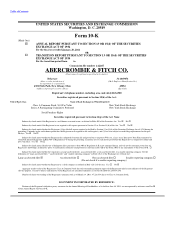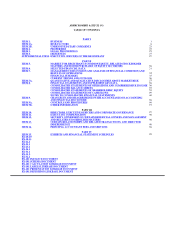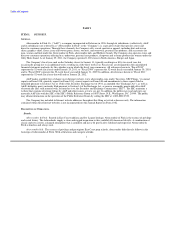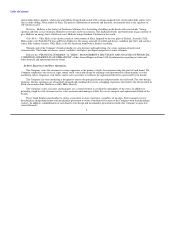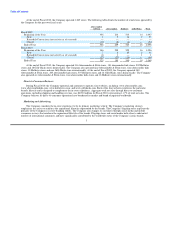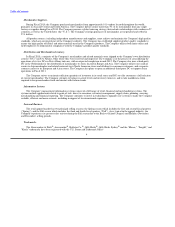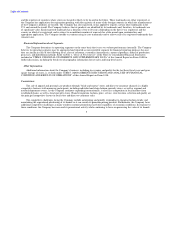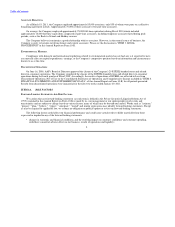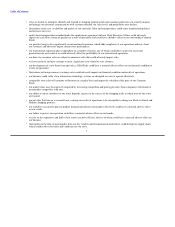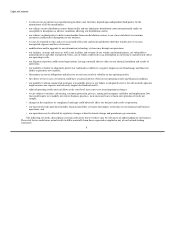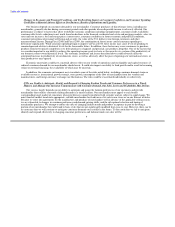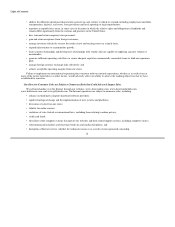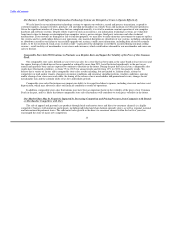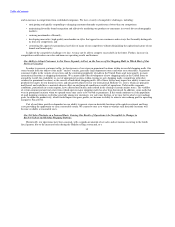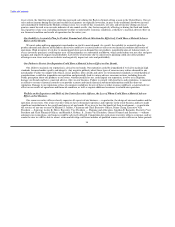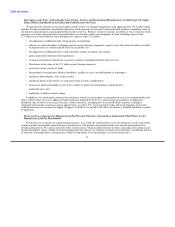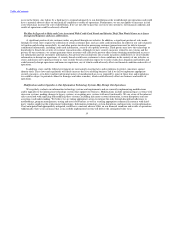Abercrombie & Fitch 2010 Annual Report Download - page 12
Download and view the complete annual report
Please find page 12 of the 2010 Abercrombie & Fitch annual report below. You can navigate through the pages in the report by either clicking on the pages listed below, or by using the keyword search tool below to find specific information within the annual report.
Table of Contents
Changes in Economic and Financial Conditions, and the Resulting Impact on Consumer Confidence and Consumer Spending,
Could Have a Material Adverse Effect on Our Business, Results of Operations and Liquidity.
Our business depends on consumer demand for our merchandise. Consumer purchases of discretionary items, including our
merchandise, generally decline during recessionary periods and other periods where disposable income is adversely affected. Our
performance is subject to factors that affect worldwide economic conditions including unemployment, consumer credit availability,
consumer debt levels, reductions in net worth based on declines in the financial, residential real estate and mortgage markets, sales tax
rates and rate increases, fuel and energy prices, interest rates, consumer confidence in future economic and political conditions,
consumer perceptions of personal well-being and security, the value of the U.S. dollar versus foreign currencies and other
macroeconomic factors. During Fiscal 2008 and Fiscal 2009, the combination of these factors caused consumer spending to
deteriorate significantly. While consumer spending began to improve in Fiscal 2010, these factors may cause levels of spending to
remain depressed relative to historical levels for the foreseeable future. In addition, these factors may cause consumers to purchase
products from lower-priced competitors or to defer purchases of apparel and personal care products altogether. One of the factors that
we consider important to our ability to achieve the operating income goals we have set for ourselves is a return of the productivity of
our domestic stores toward historical levels. The economic conditions and factors described above could adversely affect the
anticipated increase in productivity of our domestic stores, as well as adversely affect the pace of opening new international stores, or
their productivity once opened.
Economic uncertainty could have a material adverse effect on our results of operations and our liquidity and capital resources if
reduced consumer demand for our merchandise should occur. It could also impact our ability to fund growth and/or result in becoming
reliant on external financing, the availability of which may be uncertain.
In addition, the economic environment may exacerbate some of the risks noted below, including consumer demand, strain on
available resources, international growth strategy, store growth, interruption of the flow of merchandise from key vendors and
manufacturers, and foreign currency exchange rate fluctuations. The risks could be exacerbated individually or collectively.
If We are Unable to Anticipate, Identify and Respond to Changing Fashion Trends and Consumer Preferences in a Timely
Manner, and Manage Our Inventory Commensurate with Customer Demand, Our Sales Levels and Profitability May Decline.
Our success largely depends on our ability to anticipate and gauge the fashion preferences of our customers and provide
merchandise that satisfies constantly shifting demands in a timely manner. Our merchandise must appeal to each brand's
corresponding target market of consumers whose preferences cannot be predicted with certainty and are subject to rapid change. We
must translate market trends into appropriate, saleable merchandise far in advance of its sale in our stores or on our Internet websites.
Because we enter into agreements for the manufacture and purchase of merchandise well in advance of the applicable selling season,
we are vulnerable to changes in consumer preference and demand, pricing shifts, and the sub-optimal selection and timing of
merchandise purchases. We attempt to reduce the risks of changing fashion trends and product acceptance in part by devoting a
portion of our merchandise for each brand to basic styles that are not significantly modified from year-to-year. However, there can be
no assurance that we will continue to anticipate consumer demands successfully in the future. To the extent that we fail to anticipate,
identify and respond effectively to changing consumer preferences and fashion trends, our sales will be
9


